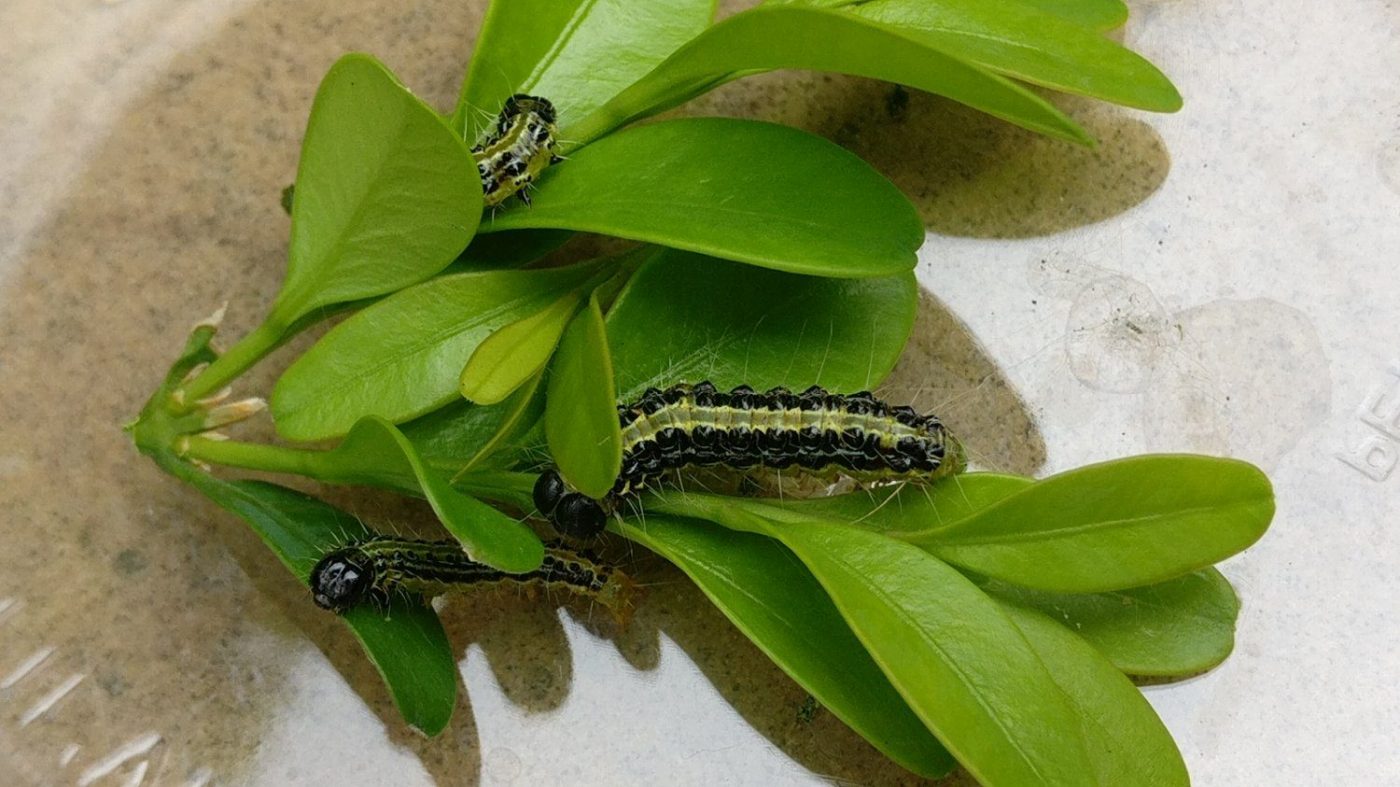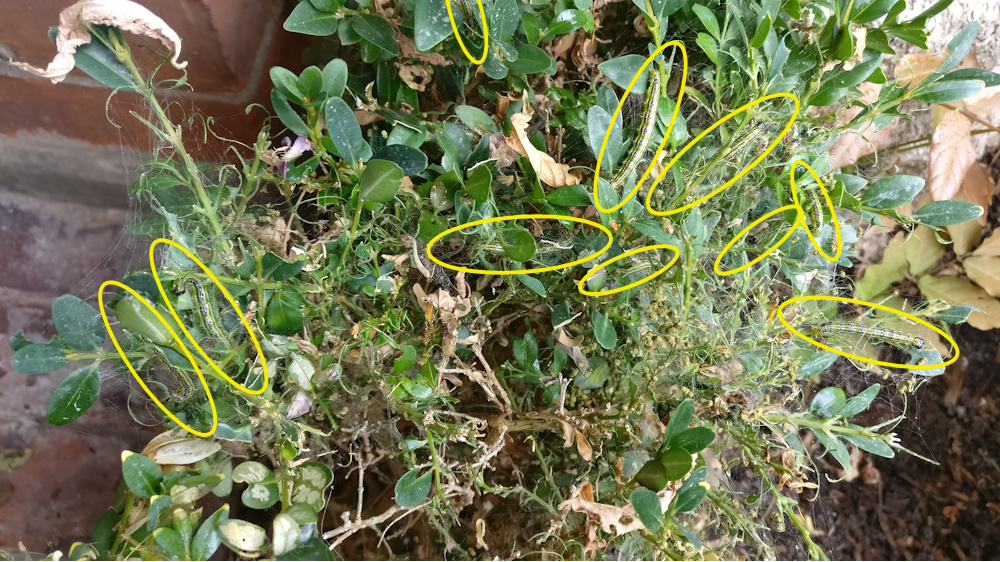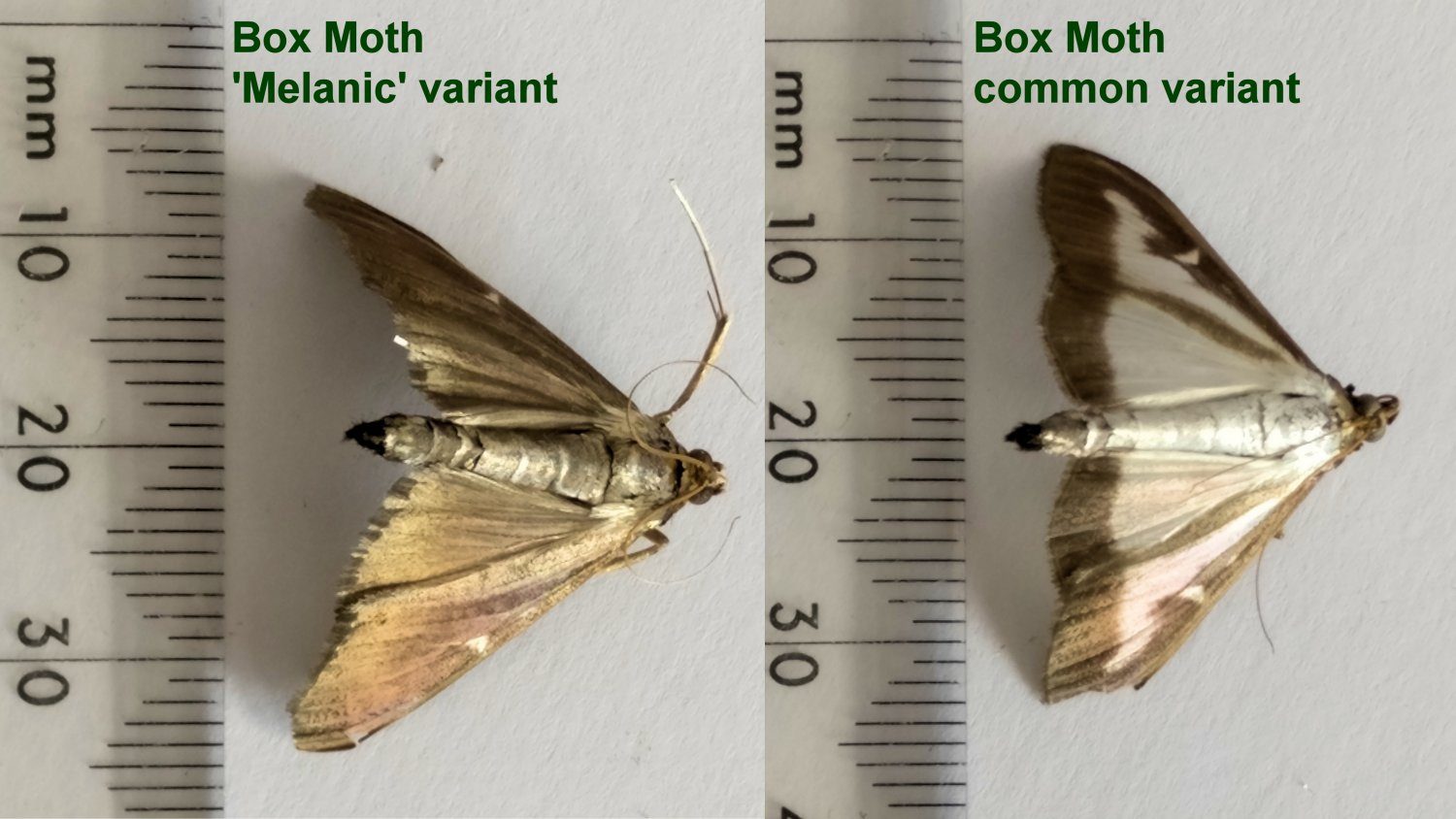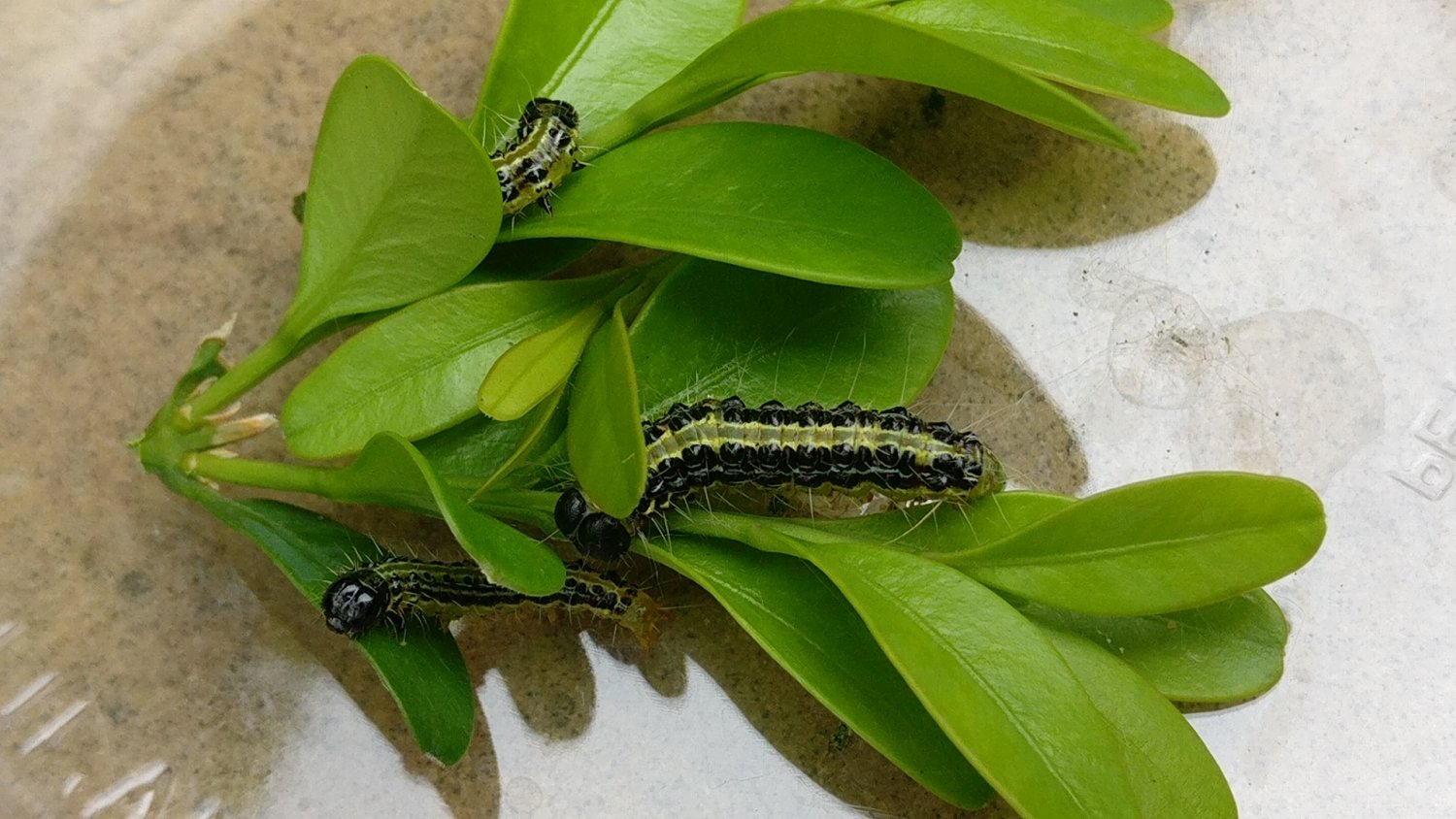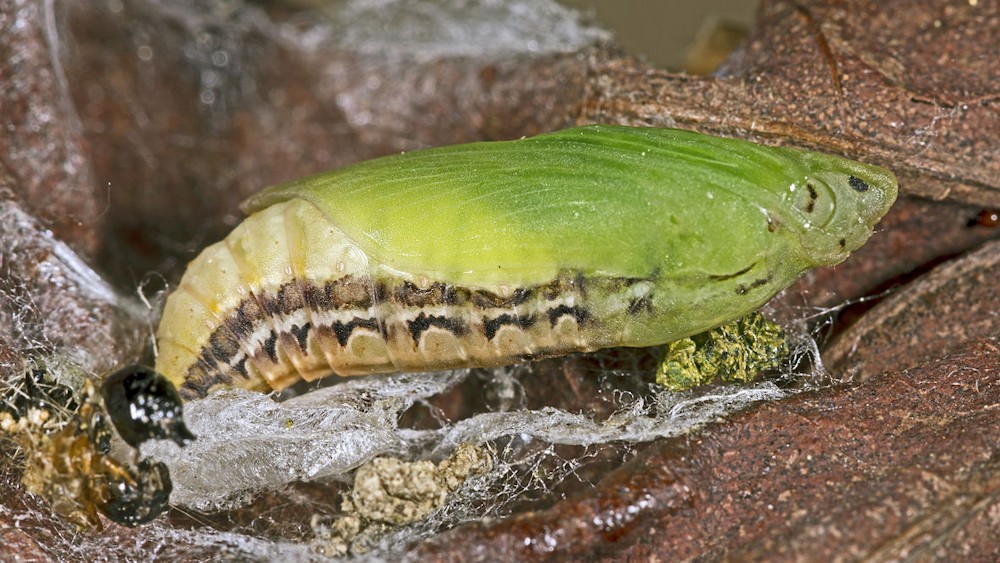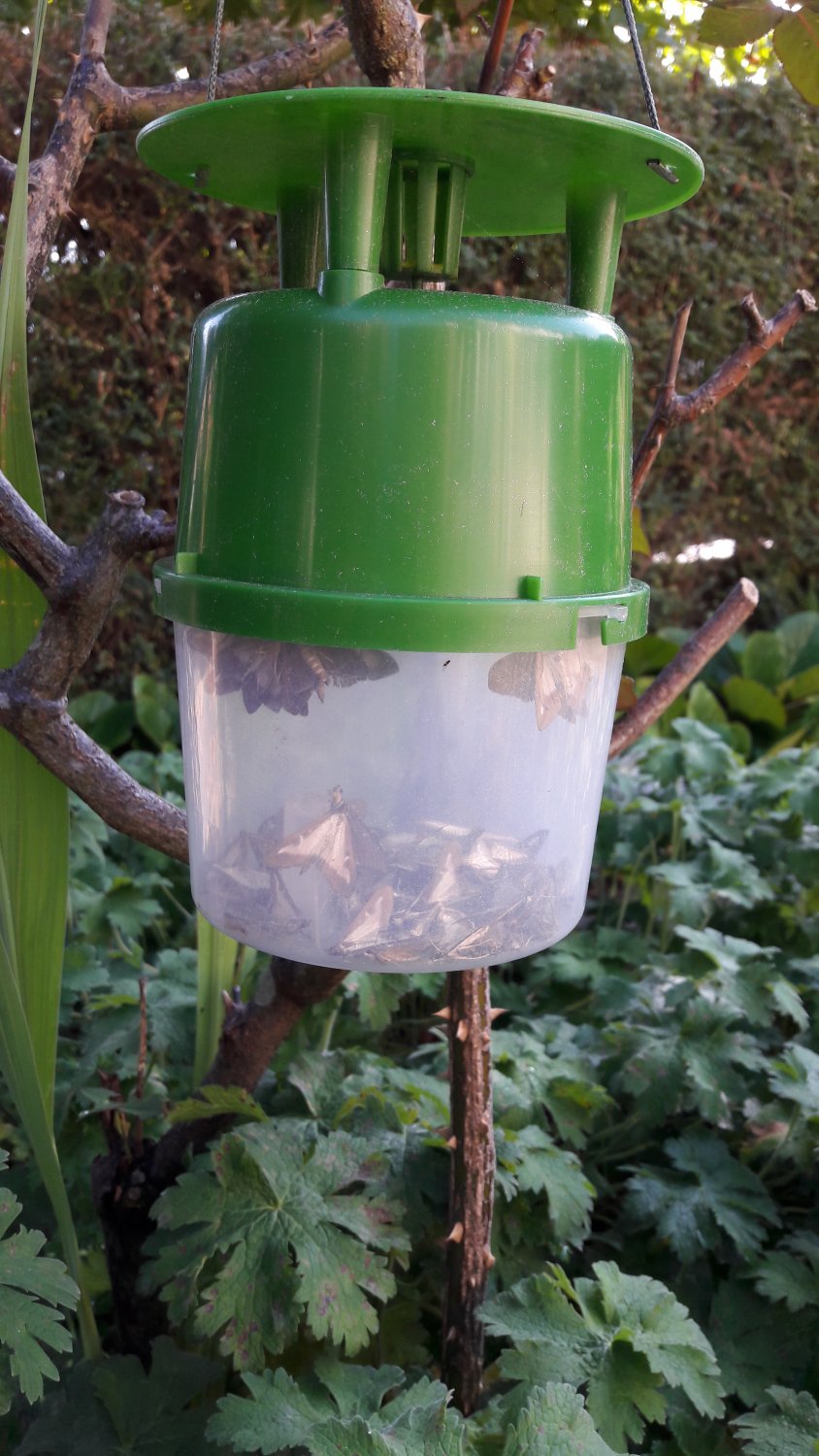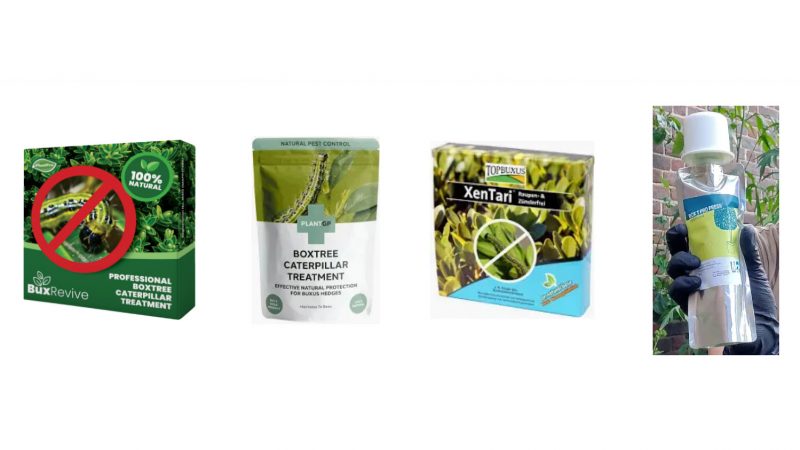Box Tree Moths ‘plague’ – What to do – (Updated 26/04/18)
2018 Update
Affected by the moth or caterpillar, don’t panic you’re in the right place to find out what to do & learn how it got here.
How did it get here?
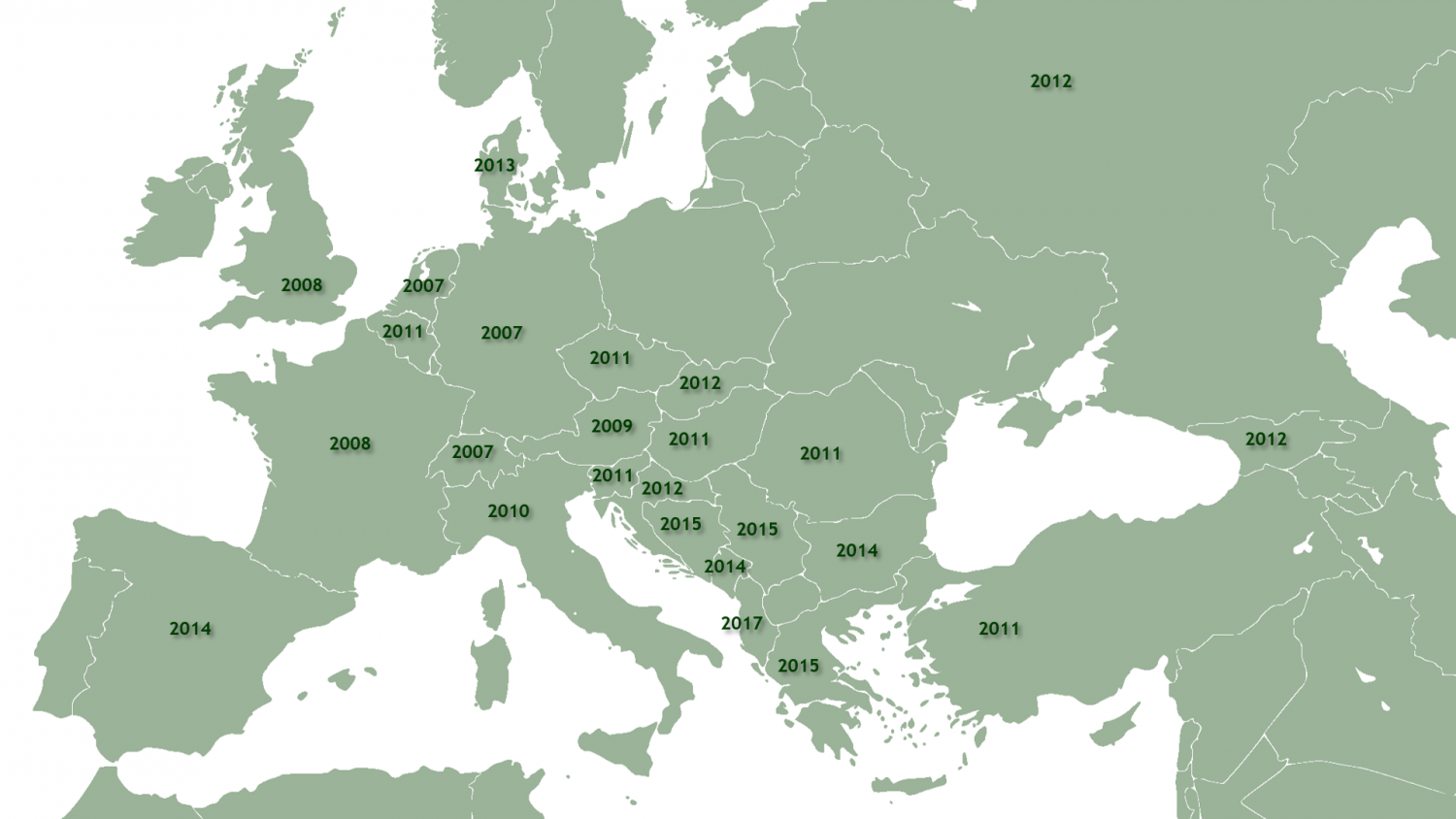
Learn about the history and reasons behind how the pest has ended up in the UK.
Where is it?
A map updated with data from gardeners and enthusiast around the country will let you know if there is moth or caterpillar in your area and how bad it is.
What Can I Do?
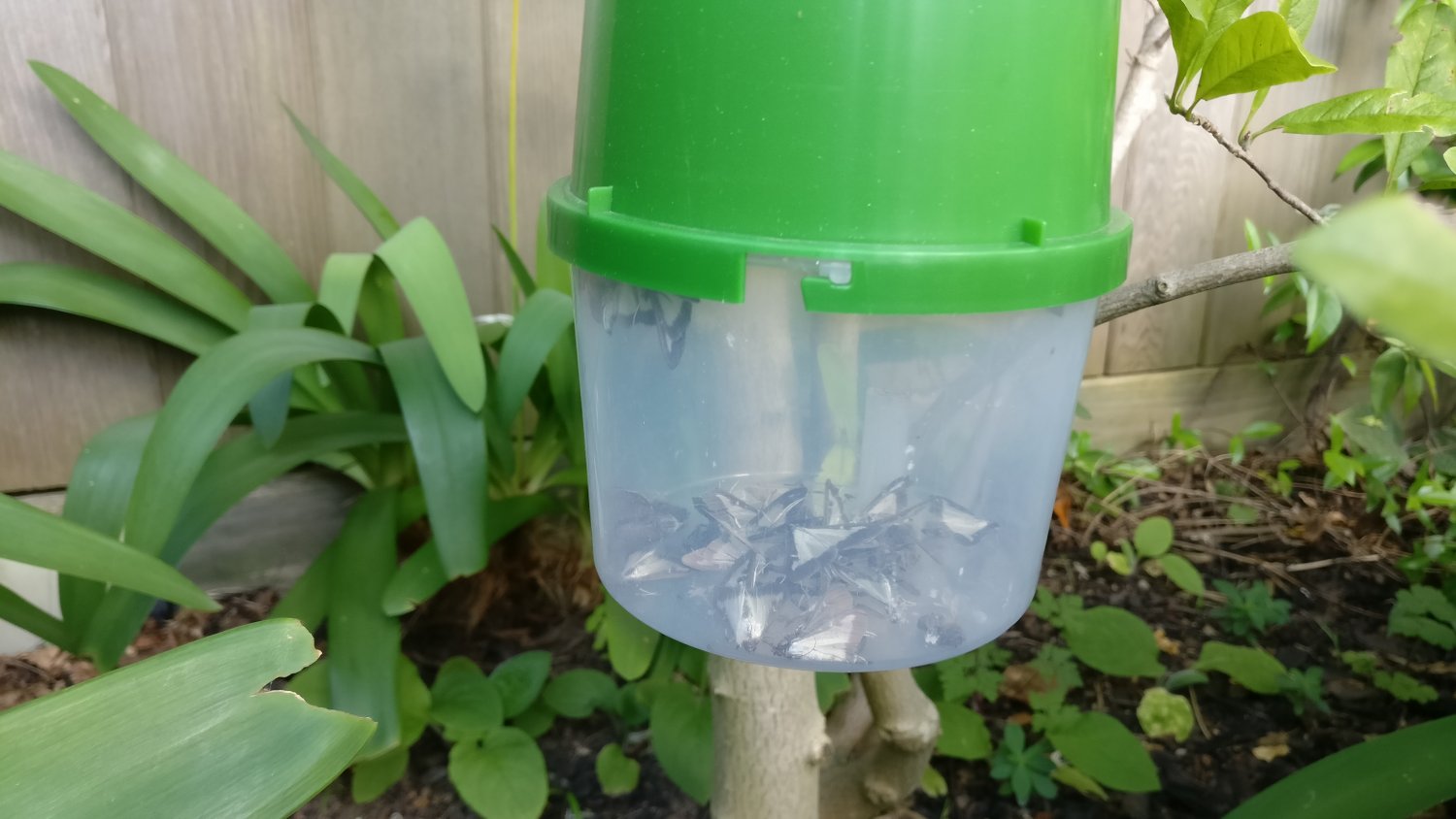
Most importantly learn how to deal with and eliminate the hungry critters.
2017 Updates
Information
- The moth lays pale yellow eggs on the underside of box leaves
- When the eggs hatch the greenish yellow caterpillars eats the leaves and produces a cobwebbing & a trail of pellets in it’s wake
- After this destruction it becomes a pupae in a chysalis before emerging as a white semi-transparent moth
- Pupae can survive over winter down to -30c
- The season for Cydalima perspectalis is from late March to the end October
- 1-3 life cycles of 6-8wks each per year depending on temperature
- Preferred temperature 21-33c
- Box moth can fly 10km/year
- Box trees can survive being attacked as long as the larvae don’t eat the bark of the main stems
- The caterpillars have no natural predators as they have toxins in them that taste bad to birds and other animals
Professional Spraying
Professional spraying can be done using pesticides such as DECIS (active ingredient: deltamethrin) which lasts for around 5-6 weeks and is in a stronger concentrations than is available to domestic gardeners (needs to be used with care around bees).
Search Google for suitably qualified professional in your area.
Domestic Spraying
Biological Insecticide (least damaging to other wild life)
XenTari is a biological insecticide based on Bacillus thuringiensis subsp. Aizawai. It is sprayed on the leaves of the of the plants and works by ingestion. Once the caterpillar has eaten the sprayed leaves, the toxic proteins disrupt the insects gut causing it to stop eating within minutes and thus prevent further damage. The caterpillar will die after a couple of days. XenTari is safe to beneficial insects & is Bee-friendly.
Products based on Bacillus thuringiensis subsp. Aizawai are available online and used in Europe, Australia, Canada & the USA. Other sub species are used to treat other pests as it is a very targeted treatment. In some of these countries it is considered an organic spray.
Note: Currently Bt based products (like XenTari) are not registered for domestic use in the UK, they are available for use by professionals.
Chemical Insecticide (use with care around other plants & beneficial animals like bees)
Garden centres sell a BAYER garden product called PROVADO Ultimate Bug Killer, which is effective but requires constant repeat spraying.
Infestations can be treated with pyrethrum (considered to be organic)
- Py Spray Garden Insect Killer
- Bug Clear Gun for Fruit and Veg
- Defenders Bug Killer
- Growing Success Fruit & Veg Bug Killer
- Growing Success Shrub & Flower Bug Killer
Or deltamethrin based products such as…
- Bayer Provado Ultimate Fruit & Vegetable Bug Killer
- Bayer Sprayday Greenfly Killer
Or lambda-cyhalothrin products such as…
- Westland Resolva Bug Killer
If you search for this items on Google you will find garden centres and suppliers readily available. Note you will need to make sure you treat the affected area well to control the caterpillars and be careful not to spray whilst plants are flowering so you don’t affect bees and insects that are pollinating the plants.
Pheromone Traps
Pheromone traps are a good indicator of moth activity in your garden and also as a preventative measure. Depending on which trap you buy it will last between 6 weeks & 3 months per dose of pheromone. Some traps covers an area of 0.40h / just under an acre, whilst others cover 180 square meters (which is 7.5m radius around the trap). Given the variety of ranges covered it is important to read the information on the trap you buy and use the appropriate number for the area to be covered.
If you want to purchase the trap shown in the setup video search for ‘BuxaTrap’ and you will find it available from a number of suppliers.
If you want to purchase this trap it is available from EBTS member James Crebbin-Bailey just email him with the quantity you require they cost £33.00 + £3 p&p each.
Organic Method:
Defra suggest the following:
Steinernema carpocapsae are pathogenic nematodes that attack caterpillars. Laboratory studies have shown that they will kill Cydalima perspectalis, therefore they have potential for control of this pest, but effective control is reliant on high humidity levels around the leaves. S. carpocapsae are available for gardeners (as Nemasys) and to professional growers (as Capsanem).
You can download the whole fact sheet by clicking on the link below marked ‘Download Further Information’
May 2016
EBTS member Simon Rose has been in touch to say anyone in West London with box in their garden should be on the look out for box moth. Simon reports that they are currently causing serious problems in areas like Chelsea, Fulham (Neil Cave (EBTS Council member) reports that all the box in this case was uprooted and disposed of), Notting Hill etc. So keep your eyes peeled if like me you are in the west of the capital and take action as soon as you spot the critters.
Reports have also come in from EBTS colleagues in France and Italy with very sad stories of the significant damage these caterpillars are doing to box and topiary gardens.
The RHS has reported that the top pest enquiry of 2015 was box tree caterpillars and moths which were first reported in the UK in 2001.
If you have experienced box tree caterpillars /moths and have images of the damage caused or suggestions for dealing with the problem please email us at website@ebts.org

